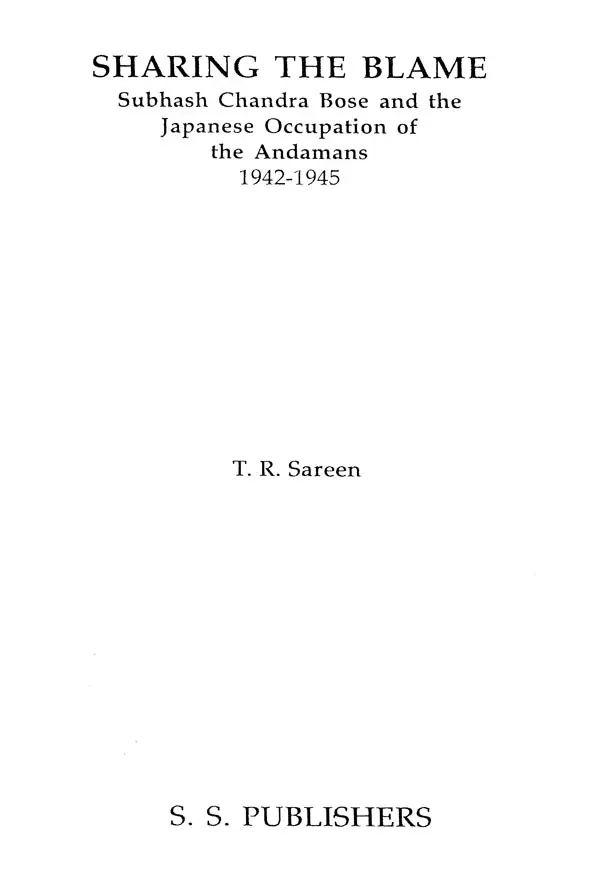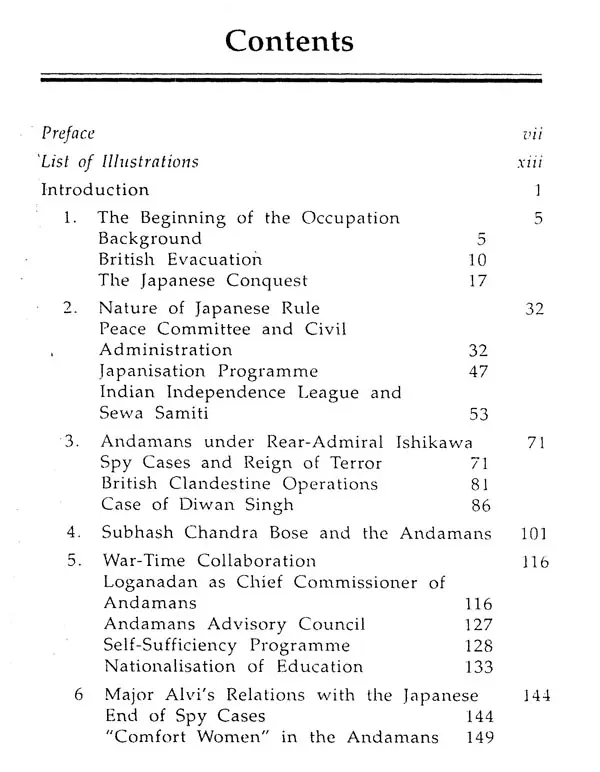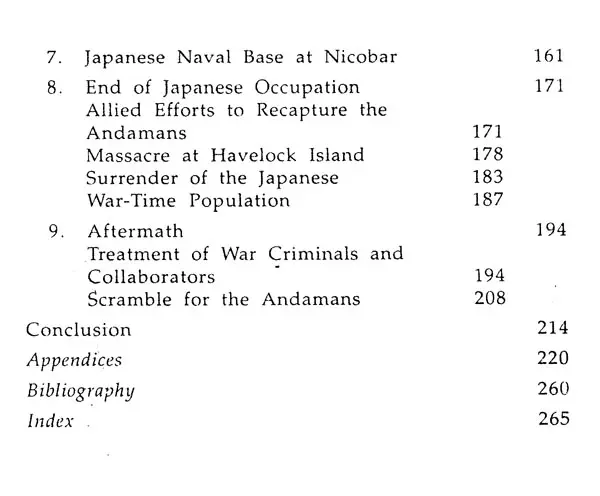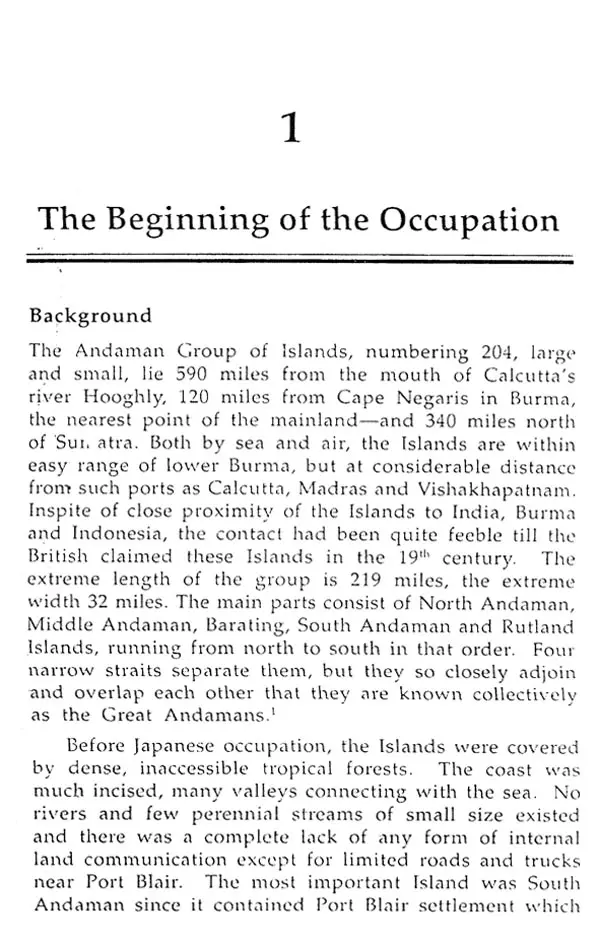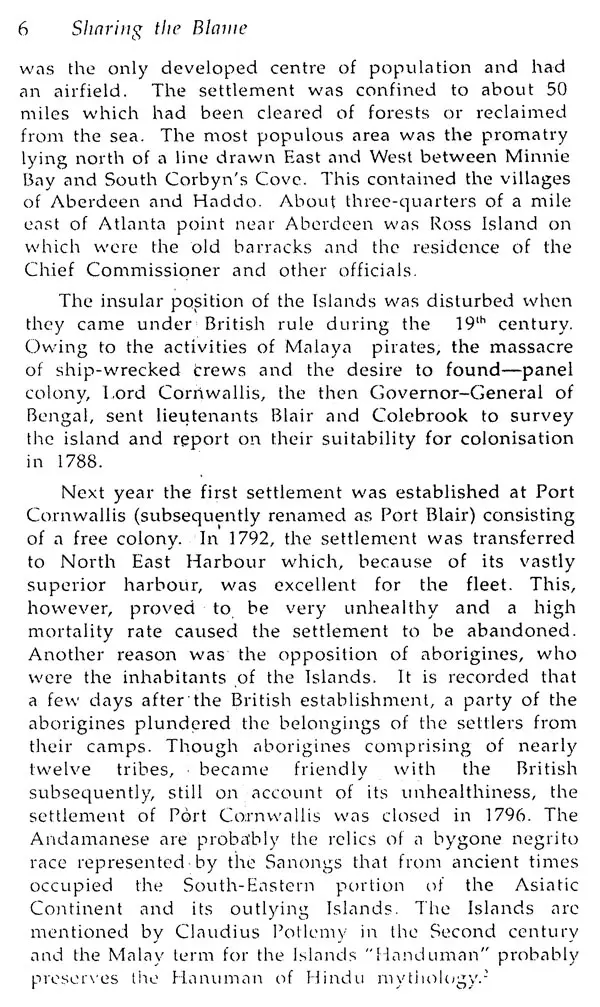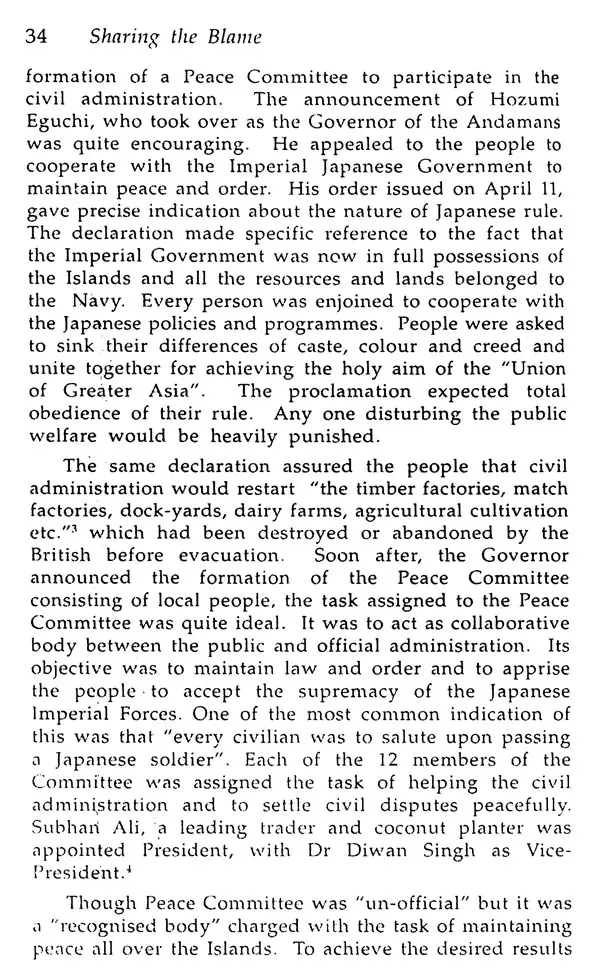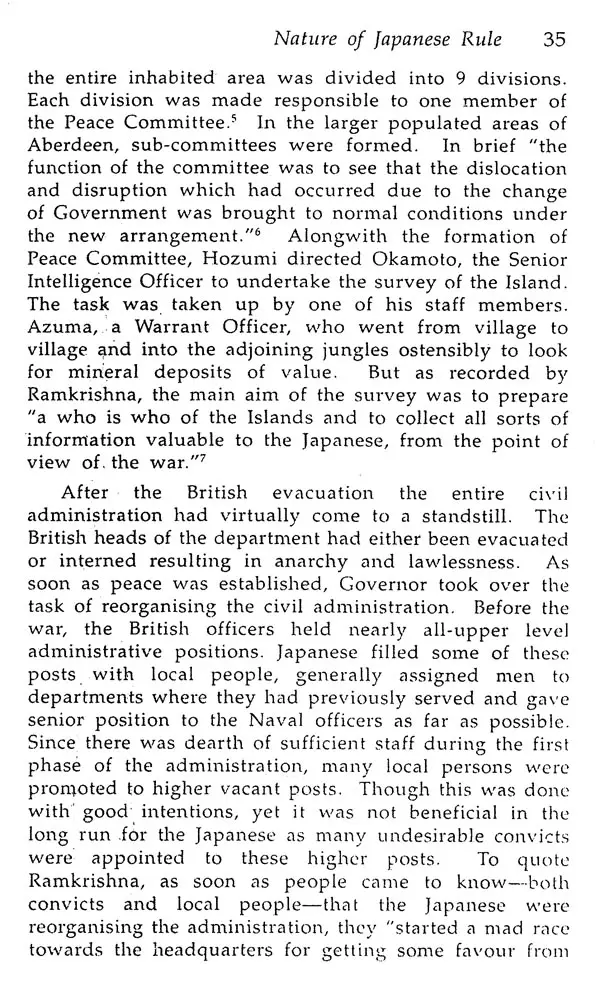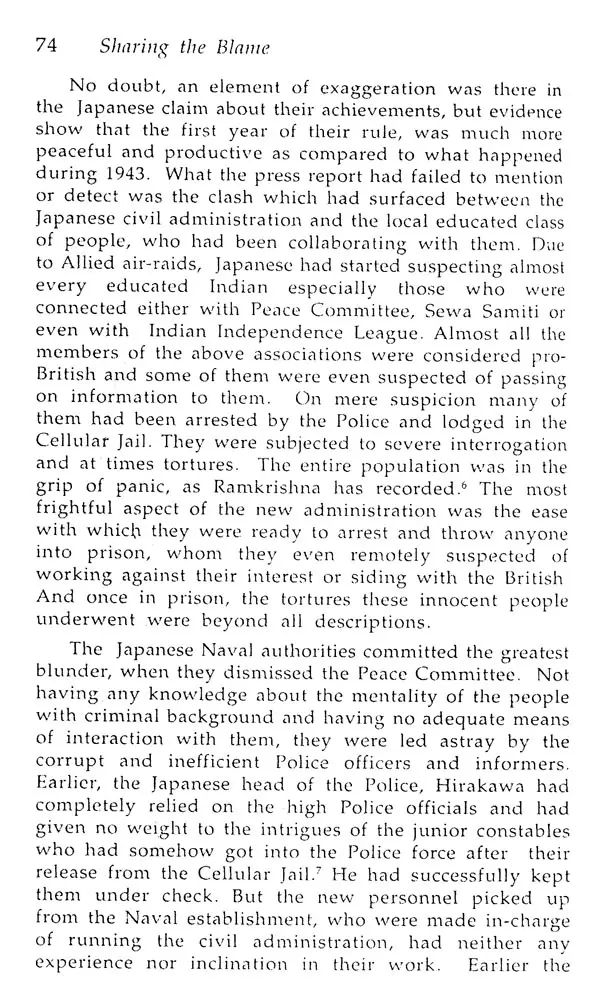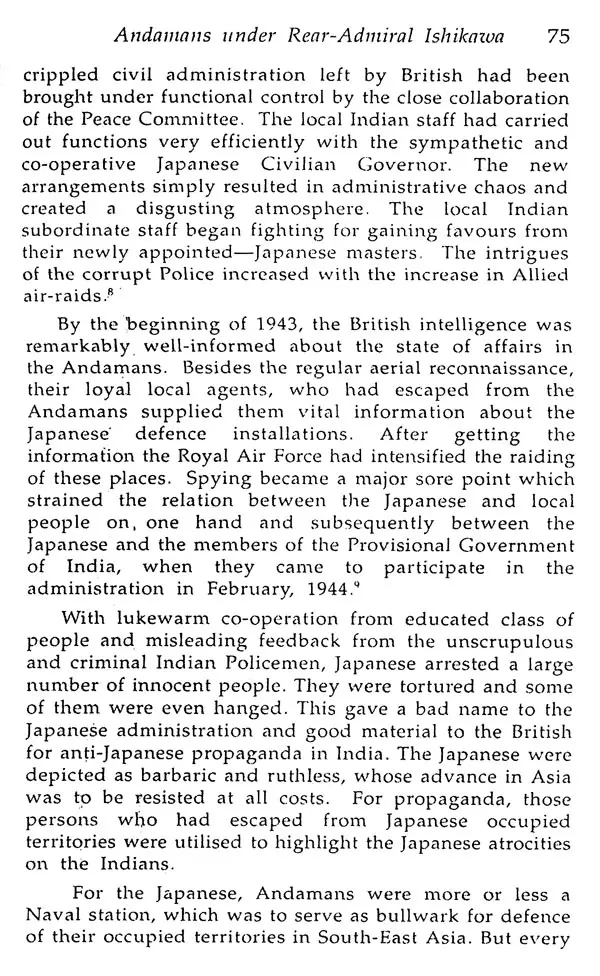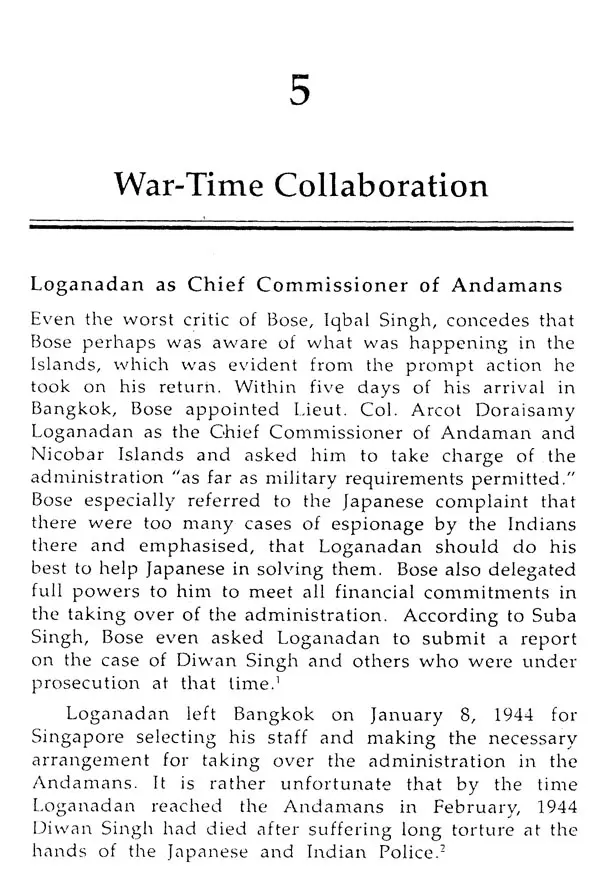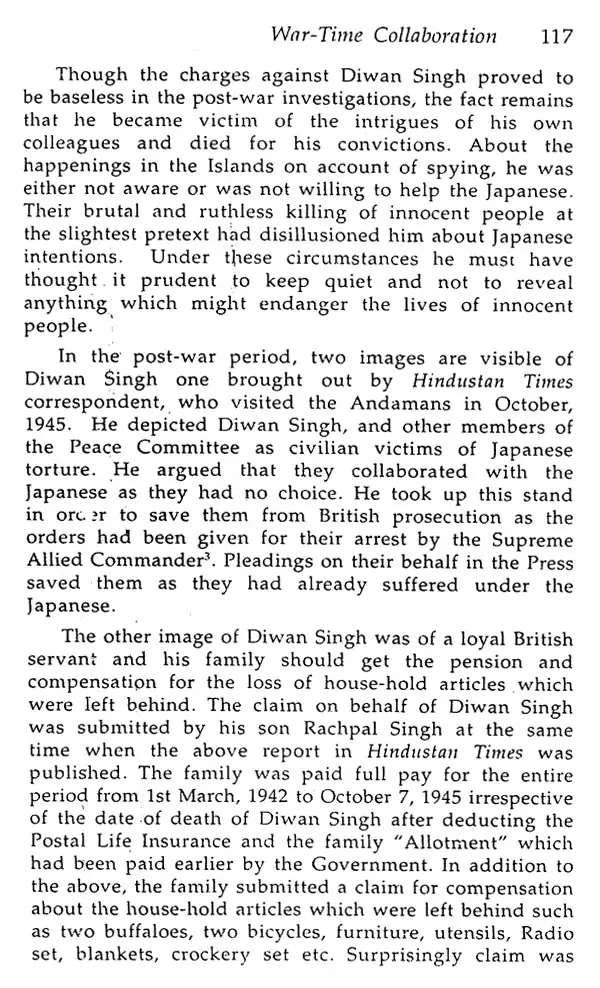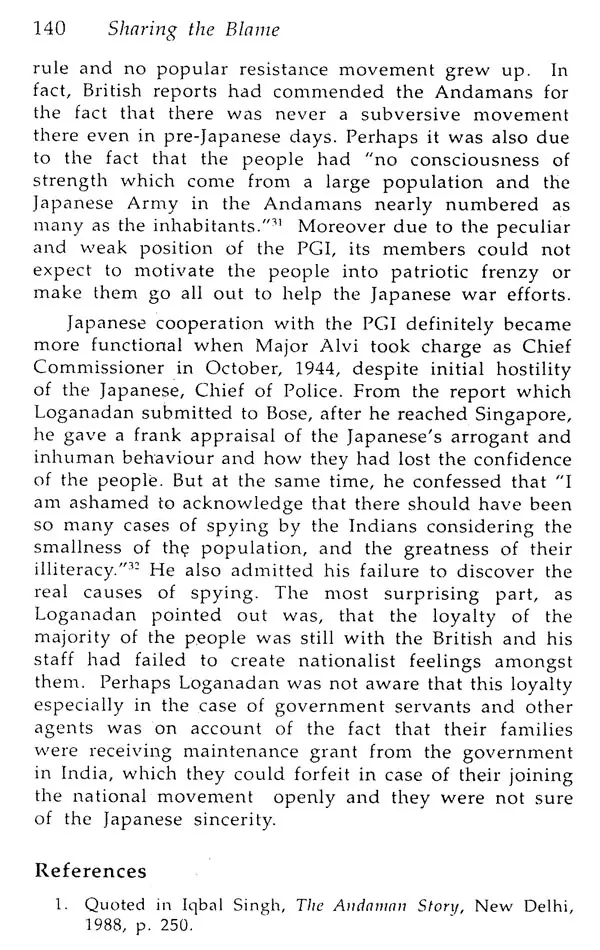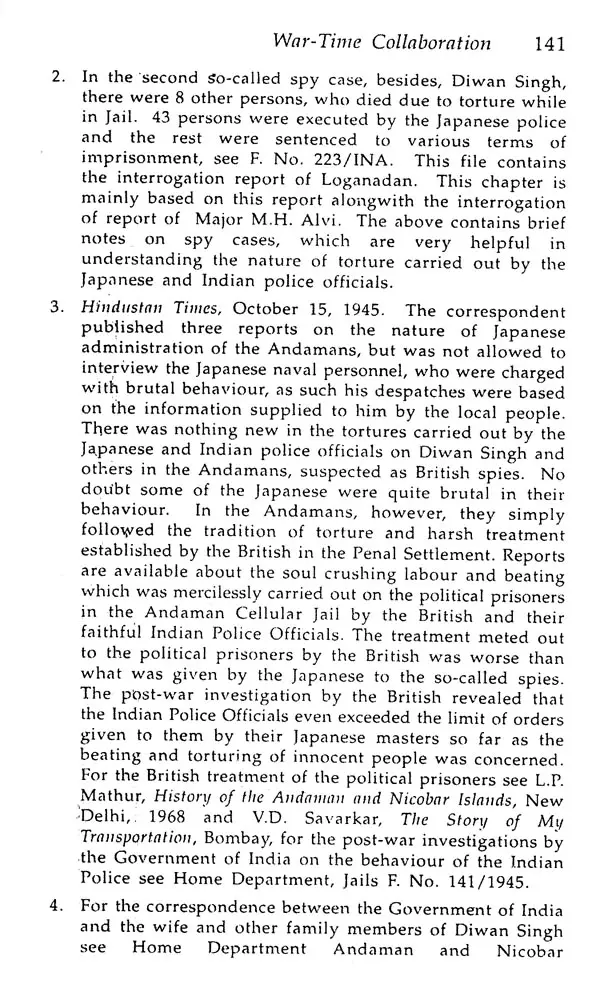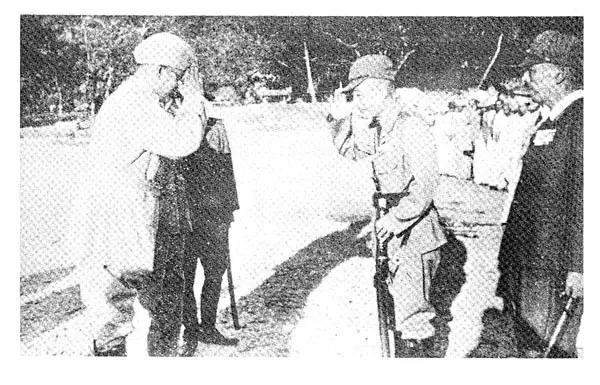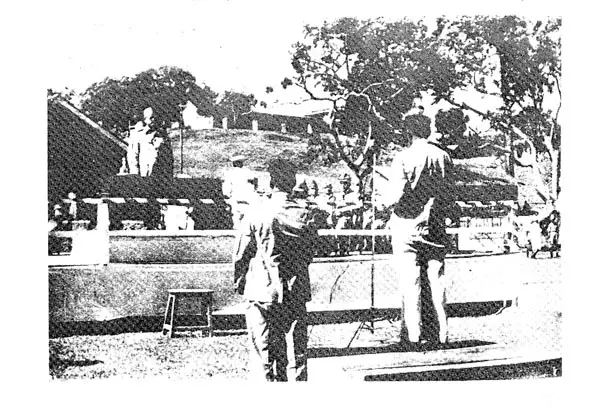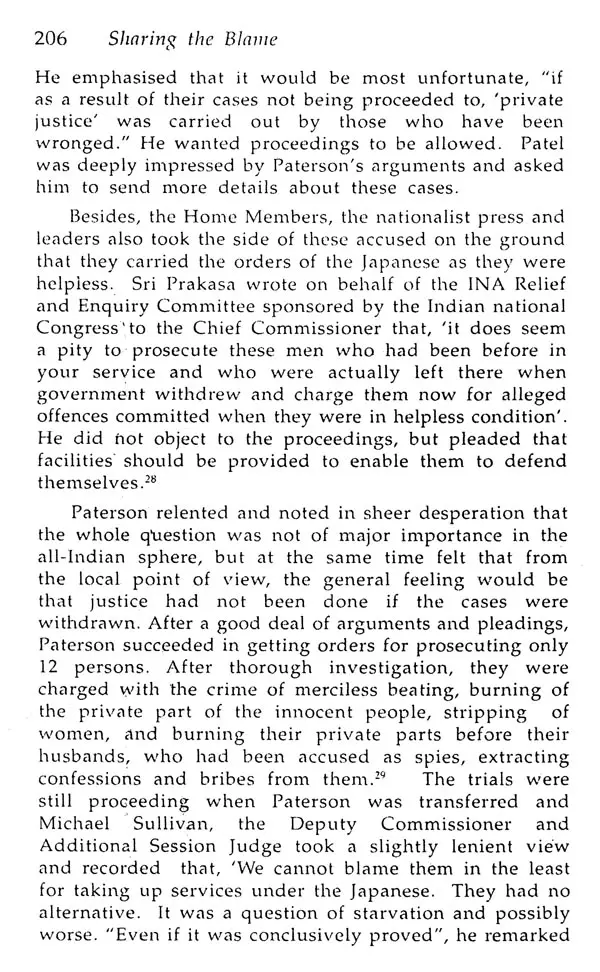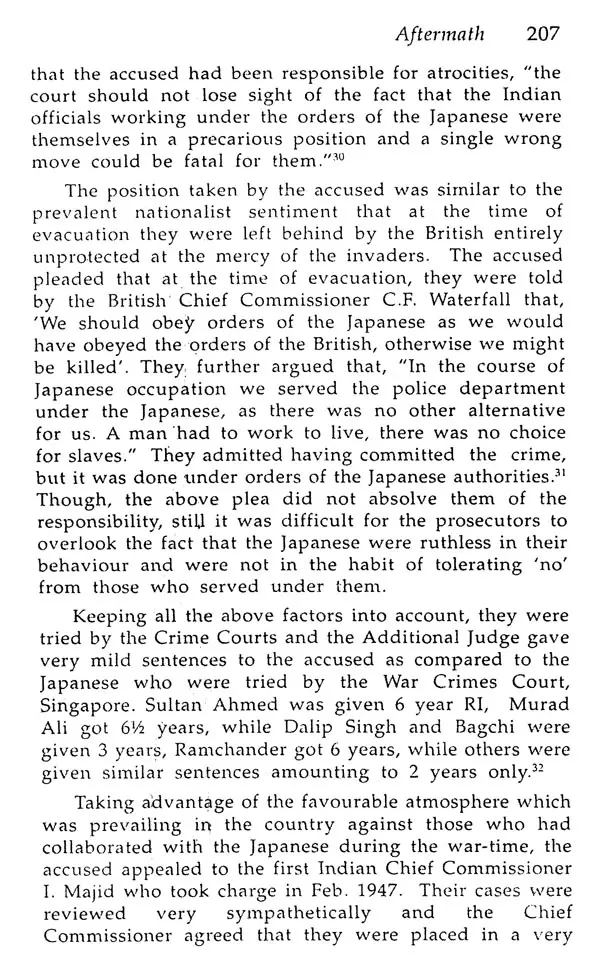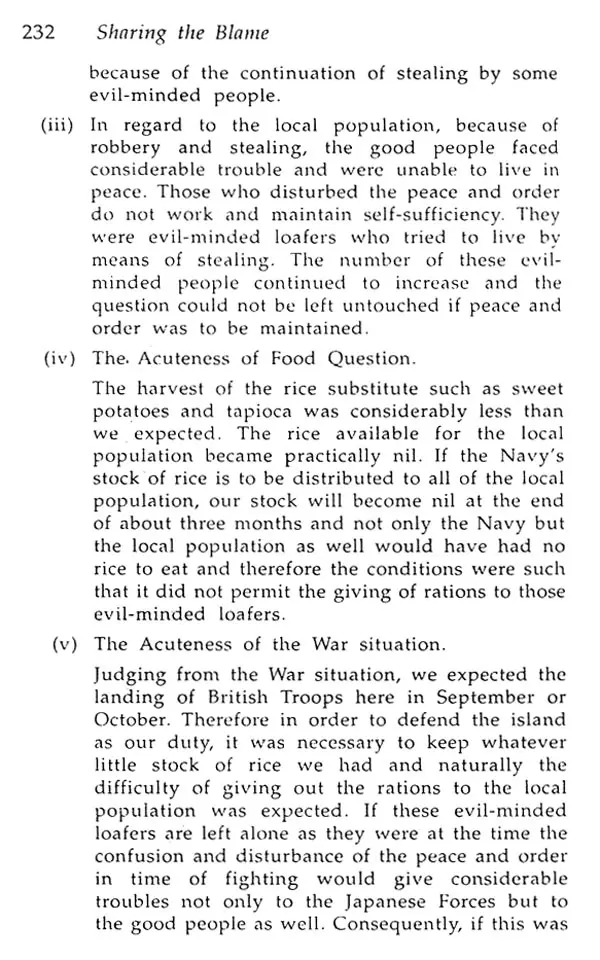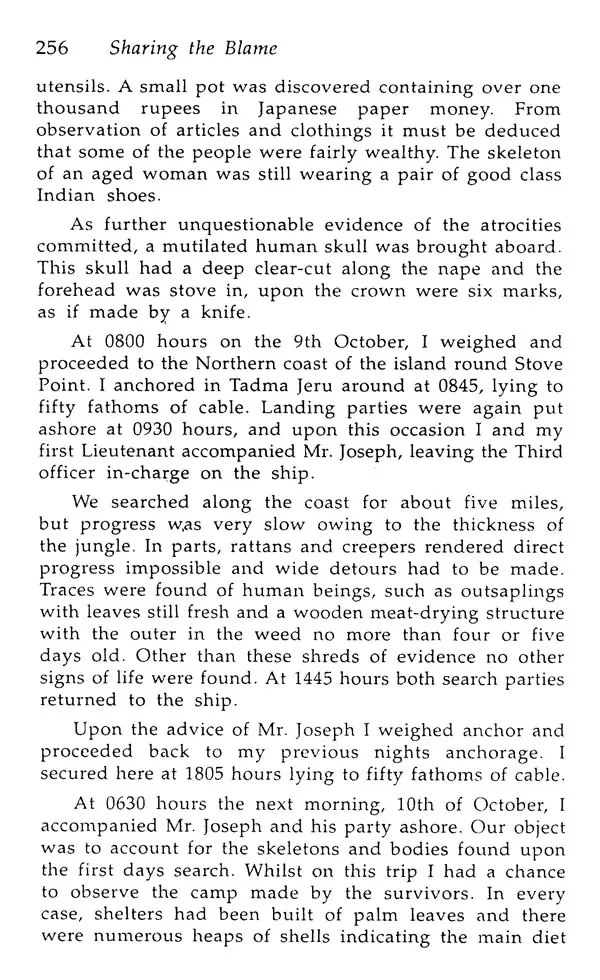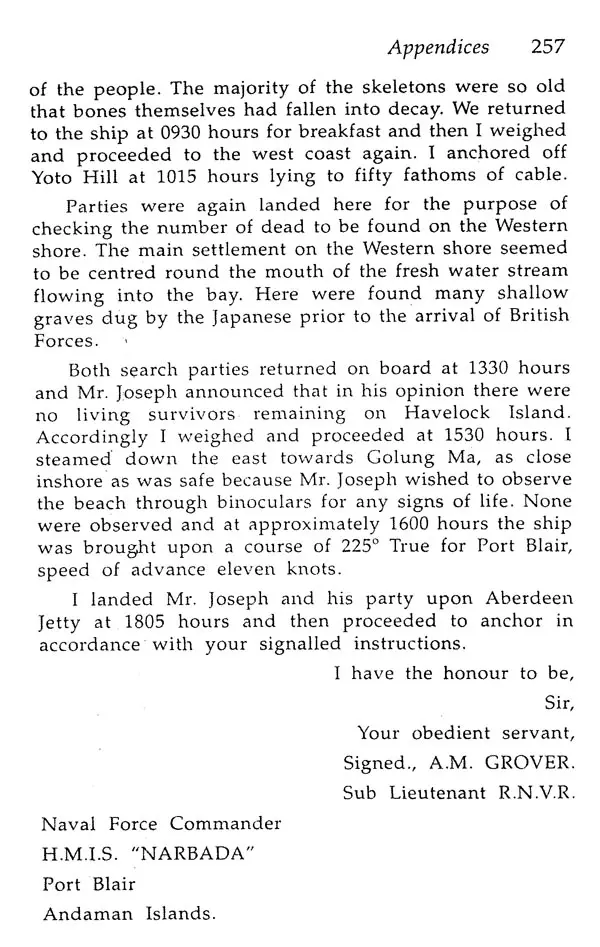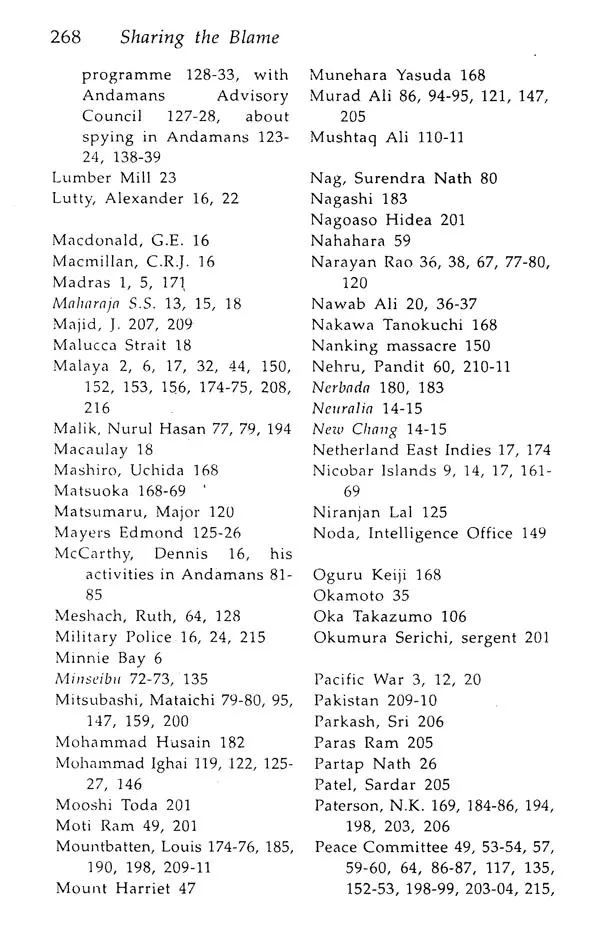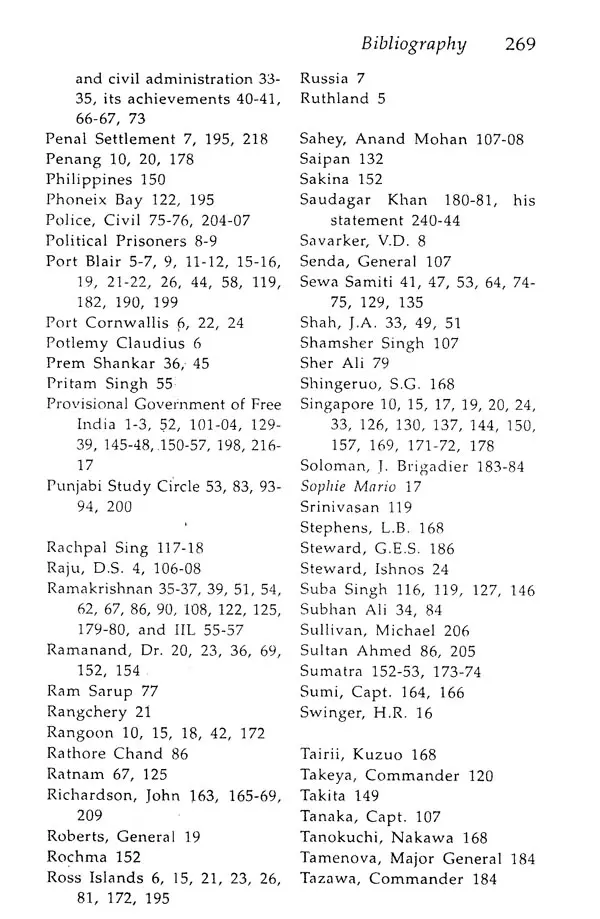
Sharing The Blame- Subhas Chandra Bose and the Japanese Occupation of The Andamans 1942-45
Book Specification
| Item Code: | UAH838 |
| Author: | T.R. Sareen |
| Publisher: | S. S. Publishers, Delhi |
| Language: | English |
| Edition: | 2021 |
| ISBN: | 8185396337 |
| Pages: | 282 (Throughout B/w Illustrations) |
| Cover: | HARDCOVER |
| Other Details | 9.00 X 6.00 inch |
| Weight | 540 gm |
Book Description
This study is based on archival sources available in India and abroad and critically examines the nature of the Japanese rule in the Andaman as, its relations with the members of the provisional Government of Azad Hind, who participated in the civil administration, the torturing of the so-called spies, the devastatation caused to life and property of the people by the Allied air raids on the islands.
The author presents objectively the circumstances leading to the atrocities committed by the Japanese and the Indian police officials on the innocent people:
This study will be M. essential and compulsive reading for students of the Second World War both in India and Japan.
It was only after 111y retirement three years back when I was visiting Japan in connection with my research on [Japanese Prisoners of War will India, that I was asked by my old friend Prof. Heiji Nakamura and my host in Japan to prepare a paper on [a p anese occupation of the Andamans with special emphasis on Dr. Diwan Singh.
The search in the Archives for the materials was not very rewarding. However, M. S. Dillon, son of Diwan Singh came to my help and gave me valuable material especially copies of newssheet started by the Japanese Andantino Shaubun, which though one sided, provided the formation for the study. Dhillon also placed at my disposal copies of original records from the Chief Commissioners office, Andamans.
The study began to take shape after I got access to the papers of the Indian National Army. The interrogation reports of Colonel A. D. Loanda, Major Alvi and others' who "vent to Andamans to share civil administration with the Japanese proved to be very useful. The -rep orts pertaining to various spy cases and other aspects of Japanese rule gave me an insight into the mentality of the Japanese and the local people. These records filled- in great many gaps in the information obtained from other sources.
In Japan, the preliminary draft was discussed with Prof. Nakamura, who gave very valuable suggestions, However, my efforts to locate the original Japanese papers or even to interview some of those who were in the And amans, was not very successful. The study of Japan Times and other contemporary newspapers was quite rewarding.
The prevalence of the above view has been mainly due to the fact that the Japanese war time plans and programmes have remained buried in Government and military archives. Difficulty of access to private and official archives of war years has further helped "to perpetuate the darkness, which still obfuscates many aspects of the Pacific War".
In recent years, with the availability of archival material there has been a revival of interest in the subject.
Scholars have started taking a slightly broader view and consider the Pacific war as a war by Japan for preservation of the defence of her vital interests threatened by the advance of the western imperialism in Asia. In the light of this shift, critical interpretation of the Japanese imperialism in South-East Asia based on indigenous sources have been published. But no full length or critical study of the occupation of the Andaman and Nicobar Islands (hereafter referred to as And amans) have been undertaken by any scholar either in Japan or in India. The reason being the paucity of archival sources'.
Based on fragmentary records and memoirs of those who were involved in the turbulent times in the Andamans, most despicable picture of Japanese administration has been presented to the readers. The Japanese have been depicted as barbaric and brutal, who during their stay of more than three years killed and tortured quite a large number of people. Even the name of Subhash Chandra Bose as head of the Provisional Government of Free India has been maligned by some of the writers.
Andamans had become famous as "Indian Bastille" and served as mute witness to the indescribable sufferings of the Indian nationalists before the war. It attracted world-wide attention after it was occupied by the [Japanese.' The fall of Singapore after the Pacific War opened the whole of Indian Ocean to Japanese Navy.
Andaman and Nicobar Islands which had virtually no defence, were immediately abandoned by the British and Japanese forces occupied by them on March 23, 1942, without any resistance. For the Japanese, as the Japan Times explained, these islands were to fall in line with the "spirit of the Greater East Asia Co-prosperity sphere", just like Malaya and Indonesia. It was expected that these islands would "become the bulwark and defenders of the. entrance to the Indian Ocean.":' This original intention had to be altered by the Japanese towards the end of 1943 when the Provisional Government of Free India (PGI) asked for the return of the Islands. The Japanese Naval authorities resisted the demand, but agreed reluctantly to the participation of the PGI in the civil administration, and saw to it that the ultimate status of the islands would be decided after the war.
Book's Contents and Sample Pages
